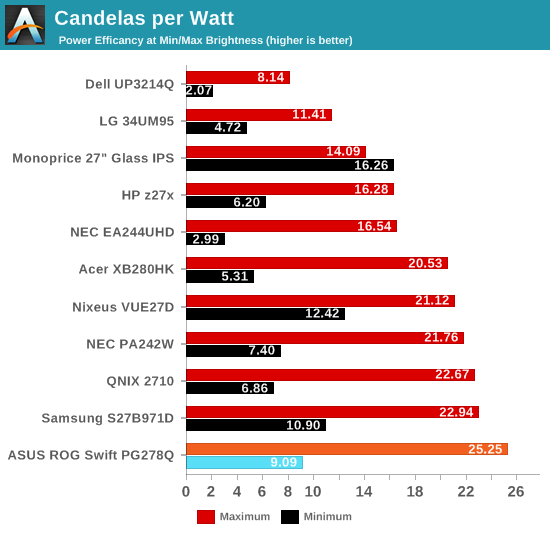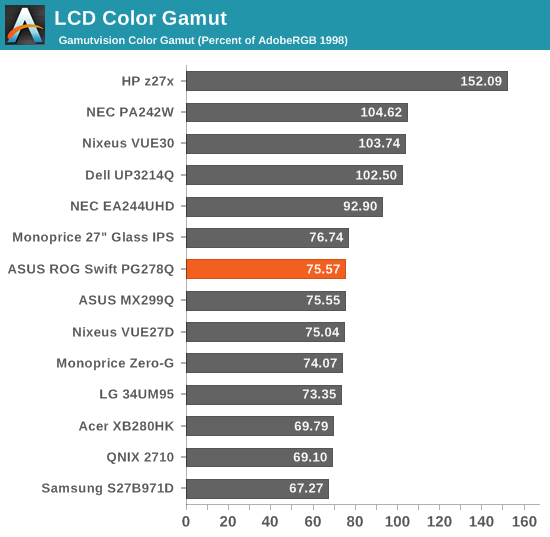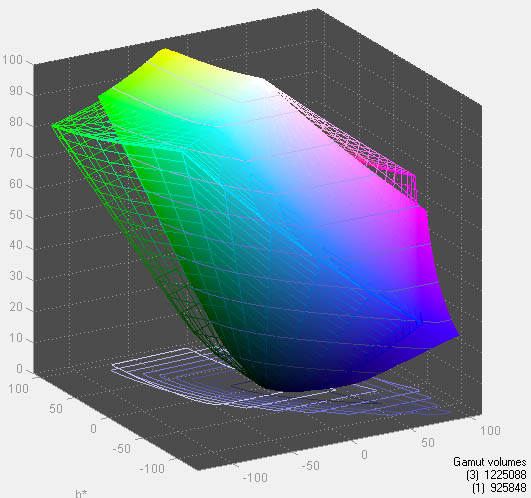ASUS ROG Swift PG278Q G-SYNC Monitor Review
by Chris Heinonen & Jarred Walton on February 13, 2015 10:00 AM ESTPower Use, Gamut, Input Lag
With a full white screen and the brightness set to maximum, the ASUS ROG uses 48 watts of power. Setting the backlight to the minimum setting reduces this down to 17 watts.


The ASUS ROG reproduces 75.57% of the AdobeRGB gamut. This puts it solidly in the sRGB color gamut, just about what we expected from looking at the earlier pre- and post-calibration results. No G-SYNC monitors have gone beyond the sRGB gamut at this point, and until there is a gaming oriented panel that is only available in a wide-gamut version, I don’t expect to see one. It just isn’t a critical feature for gaming compared to other things.

Like the other G-SYNC displays I have tested, the ASUS ROG has no inputs aside from a single DisplayPort. Because I have no CRT monitor that can run at the same native resolution as it, nor a DisplayPort compatible lag tester, I can’t produce an accurate input lag measurement for the display. Obviously this is not an ideal result for a gaming display, but any number I could produce I would have zero faith in.











101 Comments
View All Comments
Halgren - Tuesday, September 8, 2015 - link
Hi there, Great review by the way. I have the same gamma distorsion on my monitor out of the box (average 2.0 gamma) and i'm interested in this review calibration (osd params and icc profile).It would be great if you can provide them especially that a lot of people are having the same gamma distortions.